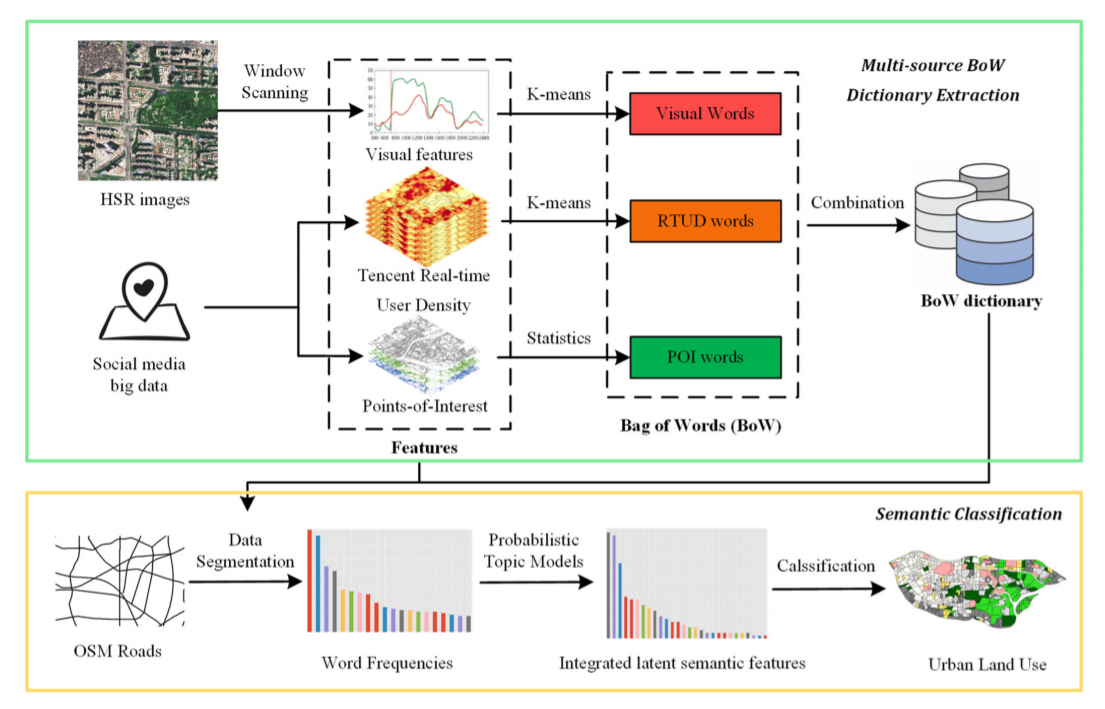Abstract
The rapid development of information technology and location techniques not only leads to an increasing growth of massive geospatial big data but also raises the attention of using these data to complement with remote sensing images. Many efforts have been made to utilize geospatial big data to identify human activity patterns and carry out urban and environmental researches, integrating with remote sensing images. Nonetheless, there are still many issues, including the representativeness and locality of geospatial big data, as well as the fusion methods, remain to be further explored. In this article, we first reviewed the innovation and proceedings of data mining and analyzing techniques, as well as remote sensing applications driven by geospatial big data. Besides, two popular concepts, namely, “Social Sensing” and “Urban Computing,” were briefly introduced. Then, we highlighted the role of geospatial big data in mining human activity dynamics and socioeconomic characteristics, and the feasibility of combining with remote sensing data for various studies. Lastly, we presented some empirical case studies on the confluence of remote sensing and geospatial big data in land use extraction, environmental and disaster monitoring, as well as socioeconomic dynamics sensing. The provided examples and discussion demonstrated the high efficiency and complementarity of the integration of remote sensing and geospatial big data, which benefits decision making from multiple perspectives and scales.

Q.E.D.









